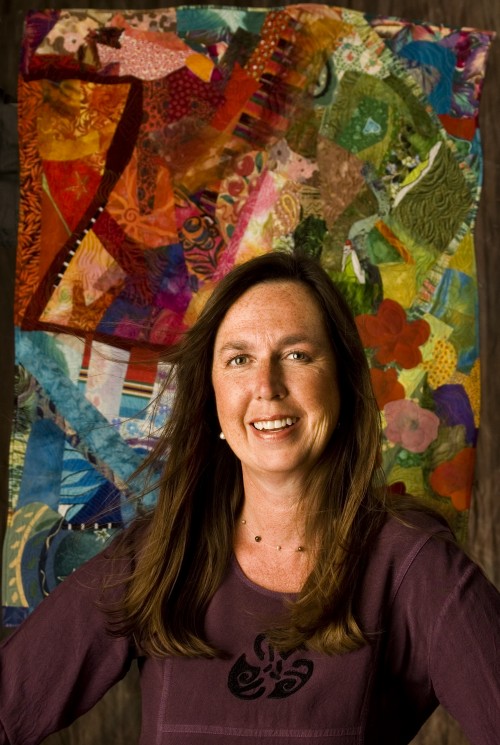The noise from my roof sounds as if it’s either hailing or a herd of small rodents is running across it. Neither is true: A single yellow aspen leaf has landed on the skylight above my head, backlit by the mid-morning light. The next second, it’s gone. The wind is blowing the leaves off the aspen tree in back.
These fall days feel so aimless. Lifeless artworks lay in the studio. I consider slaughtering or burning them, like sacrificial lambs or virgin maidens. I pray to the muses: <span style=”font-style: italic;”>give me a good creative season, give me back my sense of color, give me back line, and meaning, and desire.</span>
I’m blessed with a bright, beautiful studio. The light comes in clean and clear, untainted by window coverings or reflections. The ceiling is high, allowing fully-formed ideas to collect fourteen feet up. In the night, they float down and gently land on my worktable. I gather them up and fold them into my sketchbook for later use.
In the studio, I arrange the fabrics as if they belong to some invisible collage-by-number kit for which only I can see the code. I’m lucky to have found my calling, the true work of my heart, even though some days (or years) I’m less than enthusiastic about it.
I once heard Shonto Begay talk about the art process as having four distinct parts:
Thinking
Planning
Making
Faith
Thinking is the dreamy traveling aspect of my work. Planning is the practical part. Though the physical making of a product is what most people recognize as ‘real’ creation, the cerebral aspects are equally important.
Faith cradles the other parts; it’s the umbrella that protects the enterprise. It motivates and carries me along, and when it’s lacking that absence takes me down, literally, to the darkest places.
Faith is the component that allows any one of us to spend time in pursuit of a solution. Why bother with anything if you’re not certain the answer even exists? Faith allows us — impels us, even — to bestow time on materials and ideas, on orphan projects, or lost causes.
Truly, this is the formula for everything: thinking, planning, working and faith.
After all, every creative pursuit requires us – at the very least — to lavish time on something: on words or on movement, on instruments, on paint and canvas, or clay or fabric.
Not to say that technique doesn’t have a place in creation. I collect techniques: how to sew a perfect quarter-inch seam, how to dye and print fabrics, how to draw, how to run a sewing machine, how to hand-sew a buttonhole. It all goes into the toolbox, and is available when I need it, but to put it all in every piece would be a ridiculous, like making art from oatmeal.
I believe in abstract art, which is all about faith. No matter what, a photograph or a drawing is not the object itself. Writers say the way to tell a good story is to rely on authentic details, but not all the details get written in. An epic novel or a photo-realistic painting is still shorthand. Details trigger our own observations and experiences to authentically convey some thought or idea.
My friend Julie is seeking the path toward her next true work. While all her skills will carry her to the next place, not knowing where this journey will take her is a little disconcerting. Faith will prevent this period of her life from being fatal, but she’s at the bottom of a sine wave right now.
Perhaps we’re all at the bottom of that sine wave these days. All the news seems to indicate doom and destruction. How likely is it that we’re not even at the bottom of that arc? I don’t know what’s going to happen. No one does.
I plan to take Barbara Kingsolver’s advice, though, and have ‘faith in the enterprise’. The season requires it, as the waning light and falling leaves take us into winter. And I can only tell you what I believe: we are all on that sine wave, that roller coaster of existence, and things are looking up.

